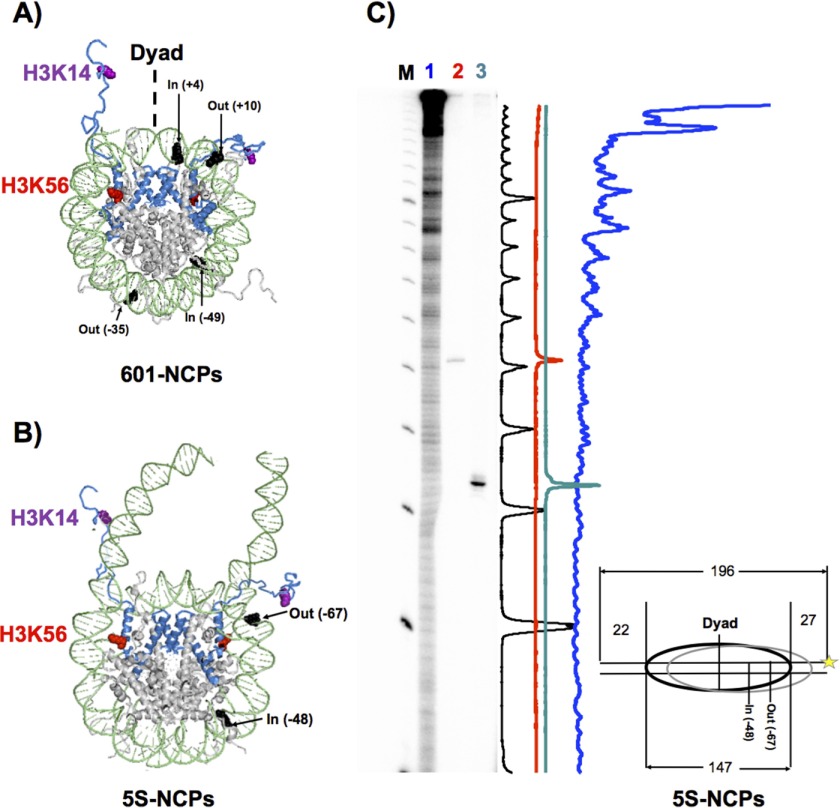FIGURE 1.
Positioning of uracils and single-nucleotide gaps relative to histone H3 site-specific acetylation in reconstituted nucleosomes. A and B, the NCP crystal structure (Protein Data Bank code IKX5) was modified to highlight the location of DNA lesions, uracil, and single nucleotide gaps (shown in black), and sites of histone acetylation. The two histone H3 proteins shown in blue, with residue H3K14 highlighted in magenta and H3K56 in red. The rotational orientation of lesions is denoted as In or Out when the DNA backbone faces the histone octamer or the solvent, respectively. Numbers in parenthesis indicate the number of nucleotides from the 5′ end (+) or 3′ end (−) of the dyad center of symmetry, which is designated as translational position 0. Position 0 for the 5S-NCPs was designated relative to the “predominant” translational position previously reported (54). For the 5S-NCPs, DNA lesions are located in the transcribed strand of a 196-bp fragment of rDNA containing the X. borealis somatic 5 S rRNA gene. C, hydroxyl radical footprint of the damaged DNA strand of 5S-NCPs, radiolabeled at the 5′ end and reconstituted with recombinant WT histones. Hydroxyl radical footprinting reactions were carried out as described under “Experimental Procedures,” and the reaction products separated on DNA sequencing gels. Lane M, 32P end-labeled 10-bp DNA ladder. Lane 1, 5S-NCP-UI (−48) exposed to hydroxyl radical reaction. Lanes 2 and 3, 5S-rDNA containing UI (−48) or UO (−67), respectively, treated with UDG and APE1, which cleaves 5′ to the AP site, generating uracil-cleavage bands 1 nucleotide longer than the same positions in the hydroxyl radical footprint scans of the gel shown on the right. The color of each scan is denoted by the color of the lane number. C, schematic, bottom right shows the translational positions of the histone octamer along the 196-bp 5S DNA substrate. The translational positions of the DNA lesions was assigned relative to the labeled transcribed strand (yellow star) of the predominant NCP position (solid black oval).

